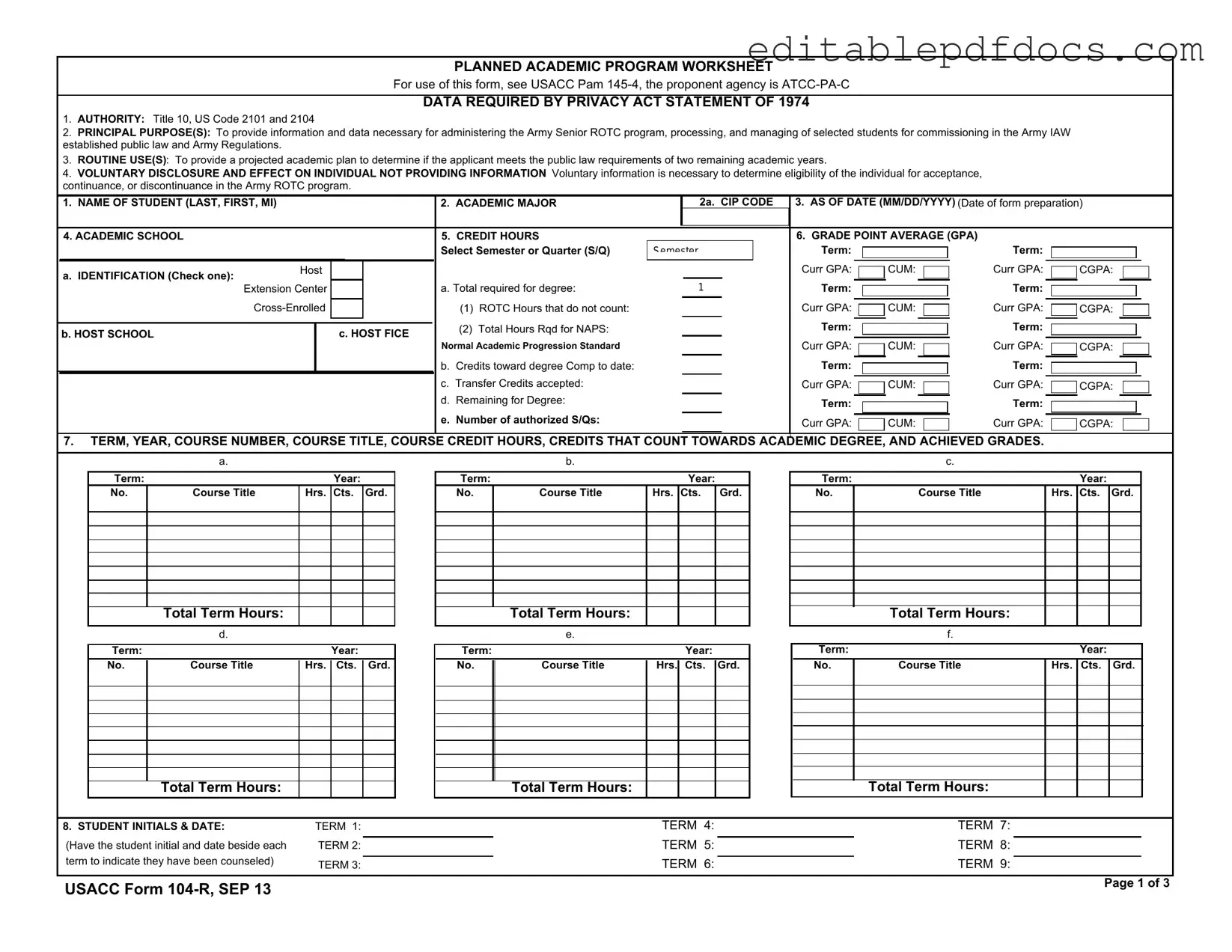Filling out the 104 R form can be a straightforward process, but many individuals make common mistakes that can complicate their applications. Awareness of these pitfalls can help ensure a smoother experience. Here are eight frequent errors to watch out for.
One of the most prevalent mistakes is failing to include accurate personal information. It is essential to double-check that the name of the student is entered correctly, including the last name, first name, and middle initial. An incorrect name can lead to significant delays in processing and may even result in rejection of the application.
Another common error involves the academic major and CIP code. Students often either leave this section blank or input incorrect information. The Classification of Instructional Programs (CIP) code is crucial for accurately categorizing the academic program. Ensure that the CIP code matches the declared major to avoid complications.
Many applicants overlook the importance of the as-of date. This date should reflect when the form is prepared, and inaccuracies here can create confusion. It's advisable to use the current date to maintain clarity in the application timeline.
Inadequate attention to credit hours and GPA can also lead to errors. Students must provide both current and cumulative GPAs, as well as the total required credit hours for their degree. Missing or incorrect data in these fields can raise red flags during the review process.
Another area where applicants often falter is in the completion of course information. Each course listed should include the term, year, course number, title, credit hours, and the grade received. Incomplete or inaccurate course details can hinder the evaluation of academic progress.
Students frequently forget to initial and date each term after being counseled. This step is vital, as it confirms that the student has received guidance on their academic plan. Without these initials, the form may be considered incomplete.
Moreover, not reviewing the requirements for degree completion can lead to errors. The review section must clearly indicate whether all listed courses are required for the degree. If any exceptions exist, they should be noted on the reverse side of the form. Failing to do so can lead to misunderstandings about academic requirements.
Finally, many students neglect to obtain the necessary signatures before submission. Both the student and the registrar or certifying official must sign and date the form. Missing signatures can result in delays or outright rejection of the application.
By being mindful of these common mistakes, individuals can enhance their chances of successfully navigating the 104 R form process. Taking the time to review each section carefully can make a significant difference in the outcome of their application.
